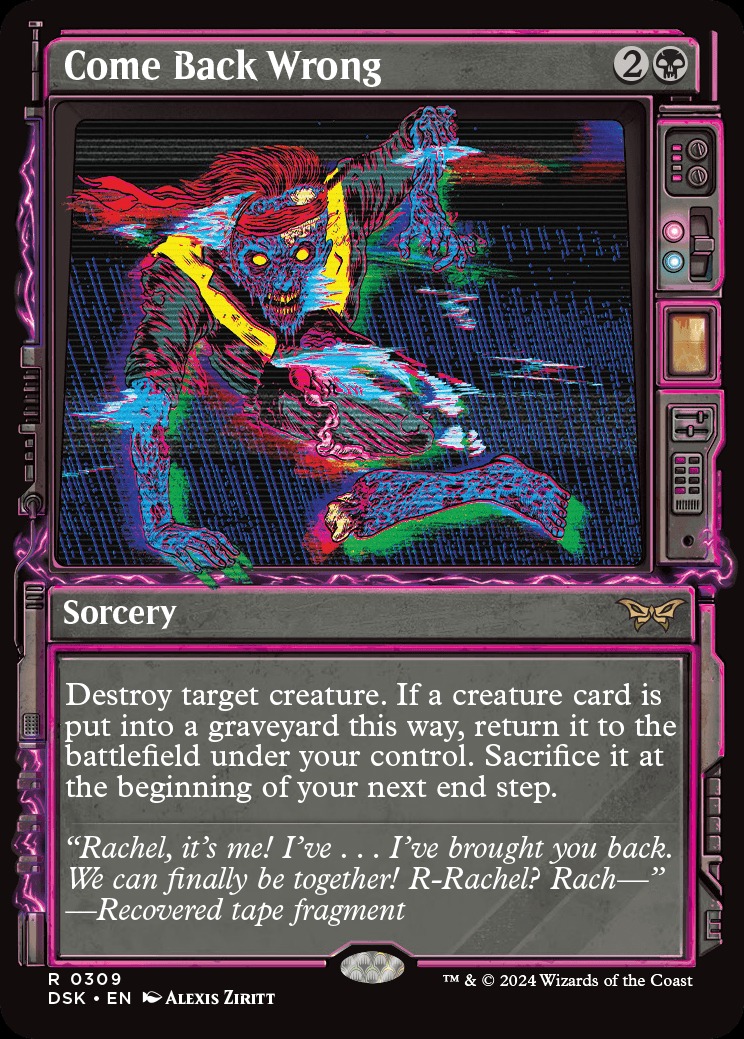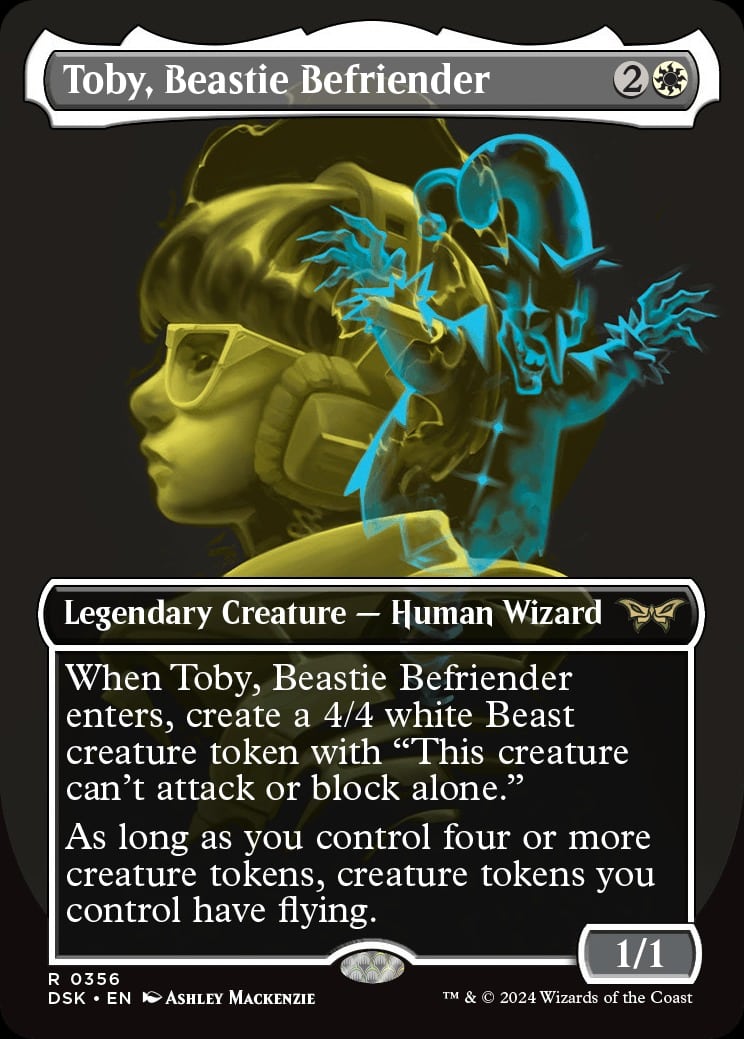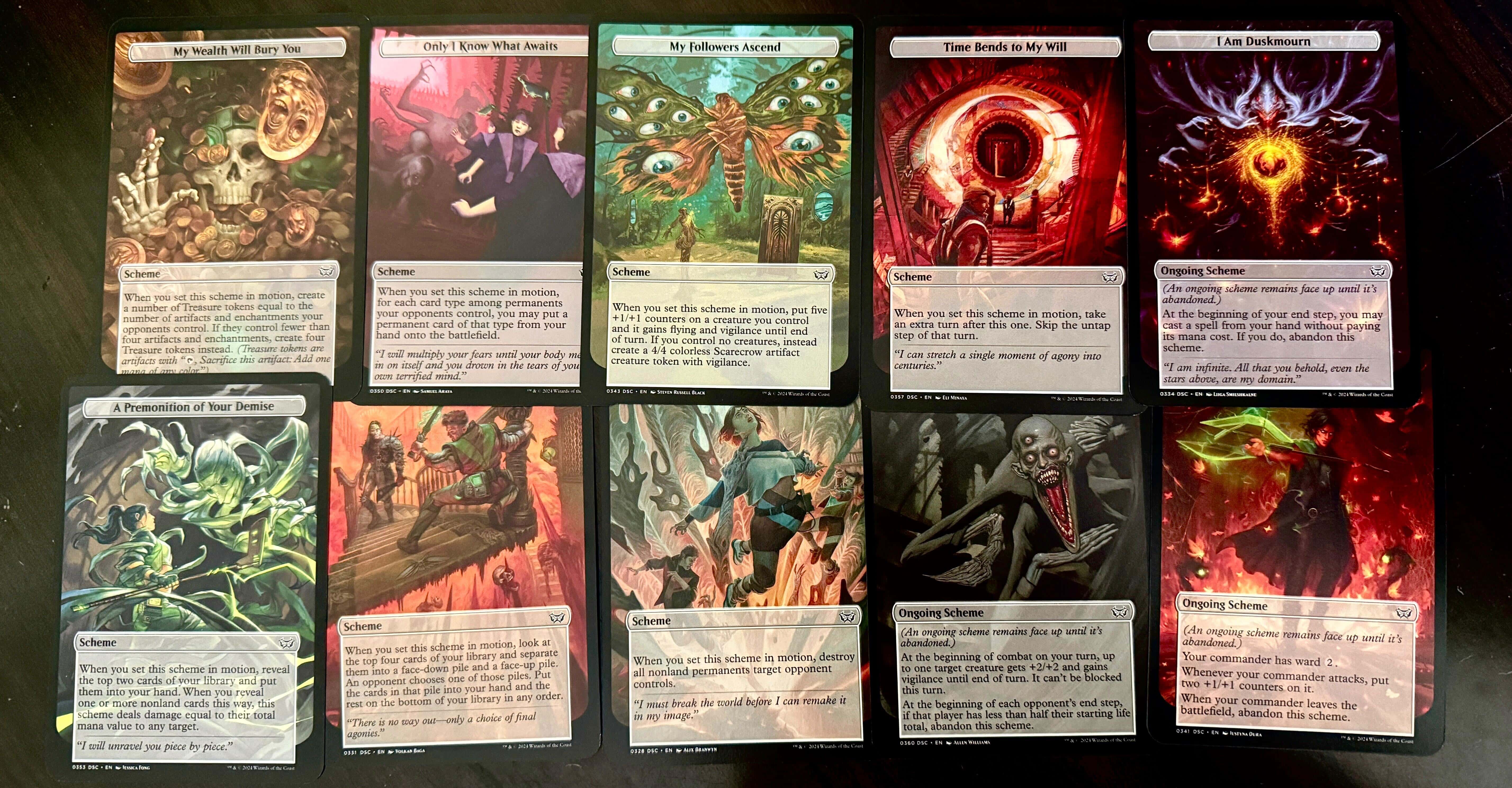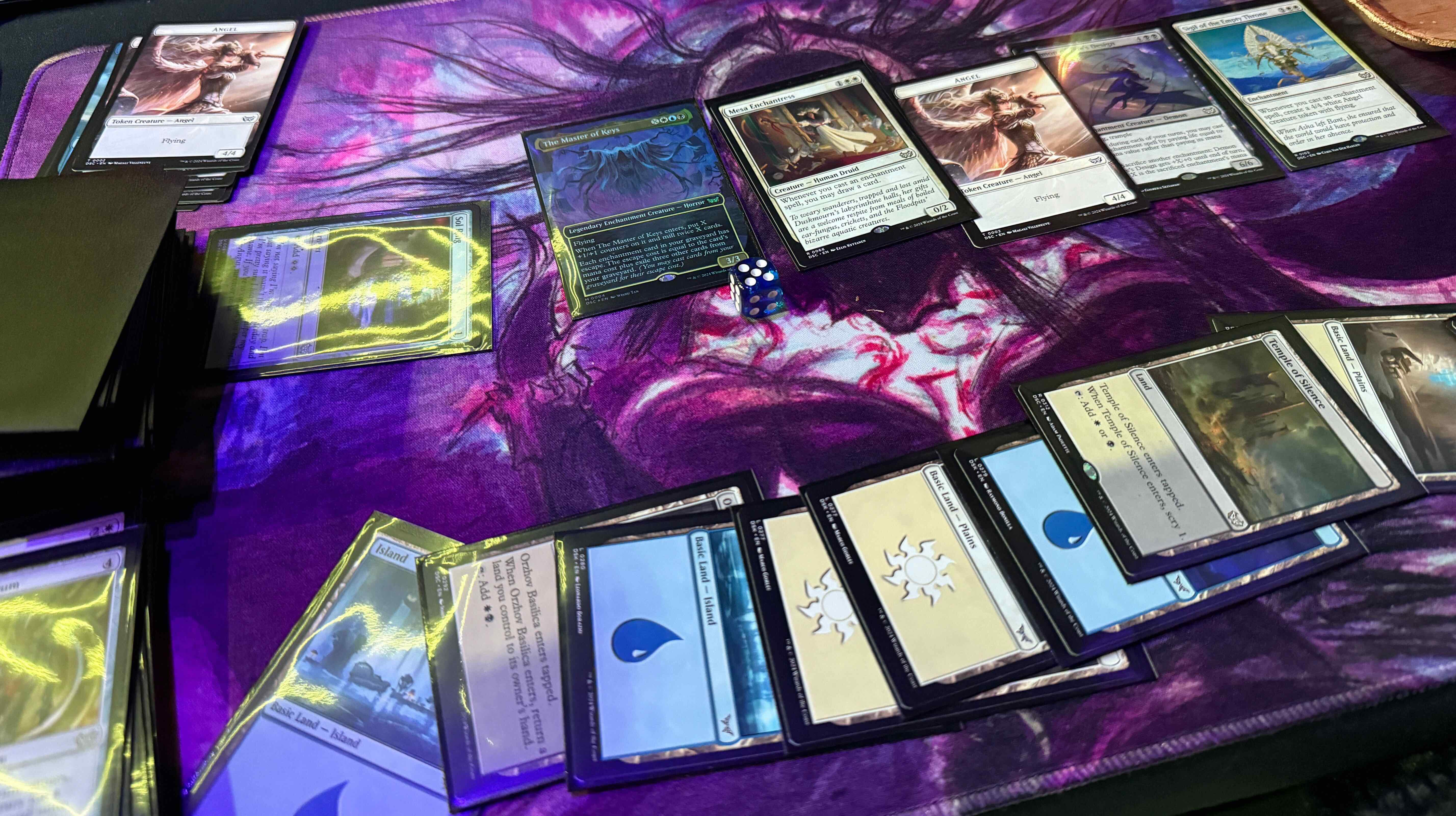Magic: The Gathering‘s new Duskmourn set is horrific. It introduces a new mechanic that allows opponents to jump scare you with mystery creatures. Its version of Archenemy unleashes a variety of terrors on friendly play. With Commanders like Lord of Pain, you’ll be punching walls in frustration. But throughout it all, you’ll have an absolute blast. Duskmourn is one of the standout MTG sets of the year, and with a strong devotion to its horror themes, it’s also one of the most engaging.
Contemporary horror doesn’t feel like a likely leap for MTG. The ongoing TCG has always had more of a devotion to high fantasy, with light elements of sci-fi creeping in on certain planes. But in the way Wizards of the Coast has twisted horror to suit MTG‘s lore, it feels like an incredibly worthwhile, appropriately-fitting theme.
The setup will be familiar to those who enjoy dipping into the horror genre: heroic rat Nashi vanishes through a mysterious, glitching door, and winds up in a new world known as Duskmourn, where an eldritch beast called Valgavoth rules over a haunted mansion. Hot on Nashi’s trail, the heroes of MTG enter this new realm, and must then fight for survival within Valgavoth’s mansion, while being plagued by all manner of spirits, ghosts, ghouls, and other beasts.
Table of Contents
MTG: Duskmourn‘s art style rules
As with most MTG sets, this plot isn’t overtly described but strong, desirable art and showcase cards combine well to elevate the horror aspects of this tale. The card Oblivious Bookworm, for example, has two variants: one showing a book worm reading in peace, and another where a strange creature has its arms hovering over this Human Wizard’s head. You can get either variant in card packs, with this dual artwork showing the creepiness hiding in Duskmourn‘s corners.
Read: MTG Duskmourn’s take on Archenemy is incredibly brutal
Showcase “Paranormal Frame” cards also spell out this horror well – they take the form of haunted TVs possessed by a variety of creatures. It’s all very The Grudge, which is one of the inspirations behind this set – and it gives the sense that something isn’t quite right in Duskmourn.
In the set’s Double Exposure showcase cards, you can also see the set’s haunting well, giving the sense that there’s always something hiding around the corner, as you travel through Duskmourn’s many haunted corridors.


It’s in the incredibly cohesive art style and direction that Wizards of the Coast effectively builds up its scares – particularly as you encounter twisted beasts like Doomsday Excruciator or Giggling Skitterspike – and then in its primary mechanics, Duskmourn delivers its true horror.
Duskmourn introduces a range of strong mechanics
For Duskmourn, there are a range of new mechanics you’ll encounter, but we should start with Manifest Dread. This new keyword action allows players to “manifest” a card by putting it onto the battlefield as a colourless 2/2 creature with no name, type, abilities, or mana cost. Then, at any point in the game, that player can pay the mana cost of that card, and turn it face up on the battlefield.
What it means for their opponents is there could be a ticking time bomb on the battlefield. You can manifest any card, and a poor draw could mean terror with no payoff, but typically, it will be a creature card that gets manifested, and that means a surprise beastie to fend off. Any card could be revealed, and that unknown factor creates a genuine sense of unease at the tabletop – which again, fits fantastically with Duskmourn‘s horror themes.
Even if you’re sure of your moves, Manifest Dread adds that element of mystery that makes you doubt yourself as you play.
Another major addition in MTG‘s Duskmourn set is Rooms. These new card types are essentially split Enchantments. You can “open” one of the doors in your Room to cast a particular Enchantment, and then open another to cast a second Enchantment.
Beyond having a neat gimmick for these cards, it also adds bonuses to card draw – you could end up with a boring single Enchantment, or have the power of choice with a Room. Plus, it also helps players to visualise Duskmourn as a haunted mansion, adding to that sense of spooky exploration.
Commander play in Duskmourn

For MTG players who enjoy a spot of Commander, Duskmourn well-serves with its Commander Deck offerings – which include new Archenemy cards that allow for spicier games. I’ve written about the fun of Archenemy over here, but for a brief snippet:
“Archenemy is a way to spice up the vibes of any pods, and keep the action fresh with a team-based approach. It feels very thematic for Duskmourn, as it’s built around the idea of an all-powerful, God-like villain, but it should work well with any Commander Deck, custom or pre-con.”
“Creatures were being buffed every turn. More creatures were being summoned. Ward made it difficult to get attacks through. An extra turn spelled our end, as the Archenemy decimated our forces, and then got free rein to decimate them again. There were board wipes, and demons, and everything in between.
It was wild and glorious, and more than a little bit humbling. I would heartily recommend the experience to anyone, and particularly those players who might be feeling a bit burned out on regular games of Commander.”
Archenemy is a great format for this set – it works well thematically, it’s creepy and groan-inducing (when the Archenemy plays a particularly mean card) and the artwork on the cards contributes to that all-important squeamish, uncomfortable vibe.
Even when you’re playing without the added layer of Archenemy, games of Commander with Duskmourn‘s crew are superbly fun. I was using the Miracle Worker Commander Deck in my playthrough, using the secondary Commander, The Master of Keys. This flying Enchantment Horror can be buffed based on card mill, and it also gives each Enchantment card in your graveyard an “escape” cost which can be paid to liberate them from your graveyard.
It makes the entire deck very frustrating for other players, as you can surface and resurface annoying enchantments, making your enemies suffer repeatedly. As an added bonus, one of these Enchantments – Sigil of the Empty Throne – allows for constant summoning of Angels, for that added layer of cheekiness.

Perhaps the best Commander of the lot, as proven across multiple games, turned out to be the aforementioned secondary Commander, Lord of Pain. Beyond looking terrifying (pictured in the above header image), this “Human Assassin” creature has menace, and also – crucially – stops every other player from gaining life.
Additionally, it deals non-blockable damage to whoever its controller chooses, as it can redirect the mana value of the first spell each player casts. In our game, that resulted in one player, every turn, simply pointing at each of us and saying ‘take 4 damage, take 2 damage’ and so on, with no recourse for defence.
The Lord of Pain was put away twice, and it came back to the battlefield twice, just as evil and devastating each time. In my third game of Commander, I switched to a life gain deck (Eriette of the Charmed
That speaks to the design of MTG: Duskmourn. With a layer of horror in every aspect of gameplay, the cards of Duskmourn instil plenty of new emotions into games of Magic: surprise, frustration, horror, and everything in between.
It’s an incredibly well-put-together set that introduces fresh new vibes and spices up the action. If horror is your jam, or you’re just looking to amp up the difficulty level of MTG, then Duskmourn is the set for you. Its impeccable vibes are awesome, in the true sense of the word.
Magic: The Gathering – Duskmourn Play Boosters, Collector Boosters, and Commander Decks were provided to GamesHub for the purposes of this review.
Explore Our Trusted Gambling Resources
Discover essential guides to casino sites, betting platforms, and crypto casinos—updated for 2025.





